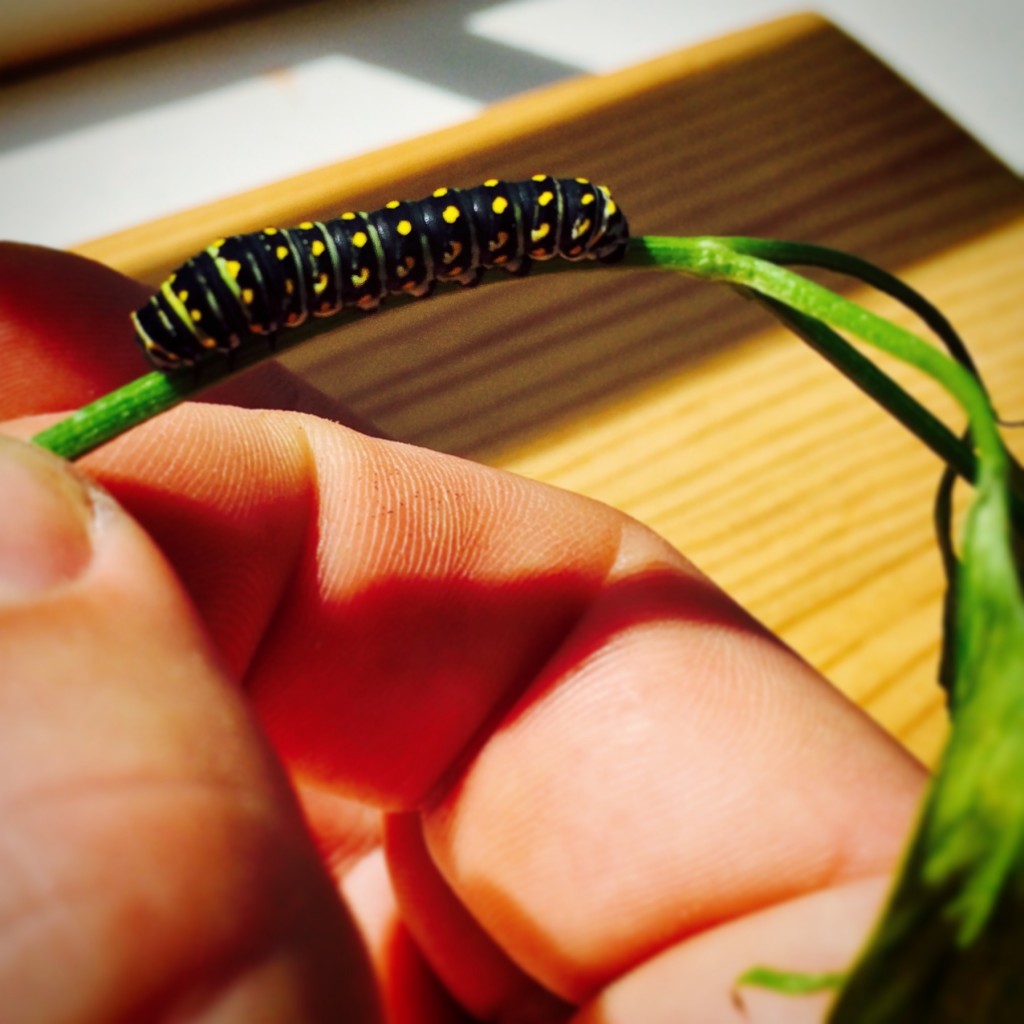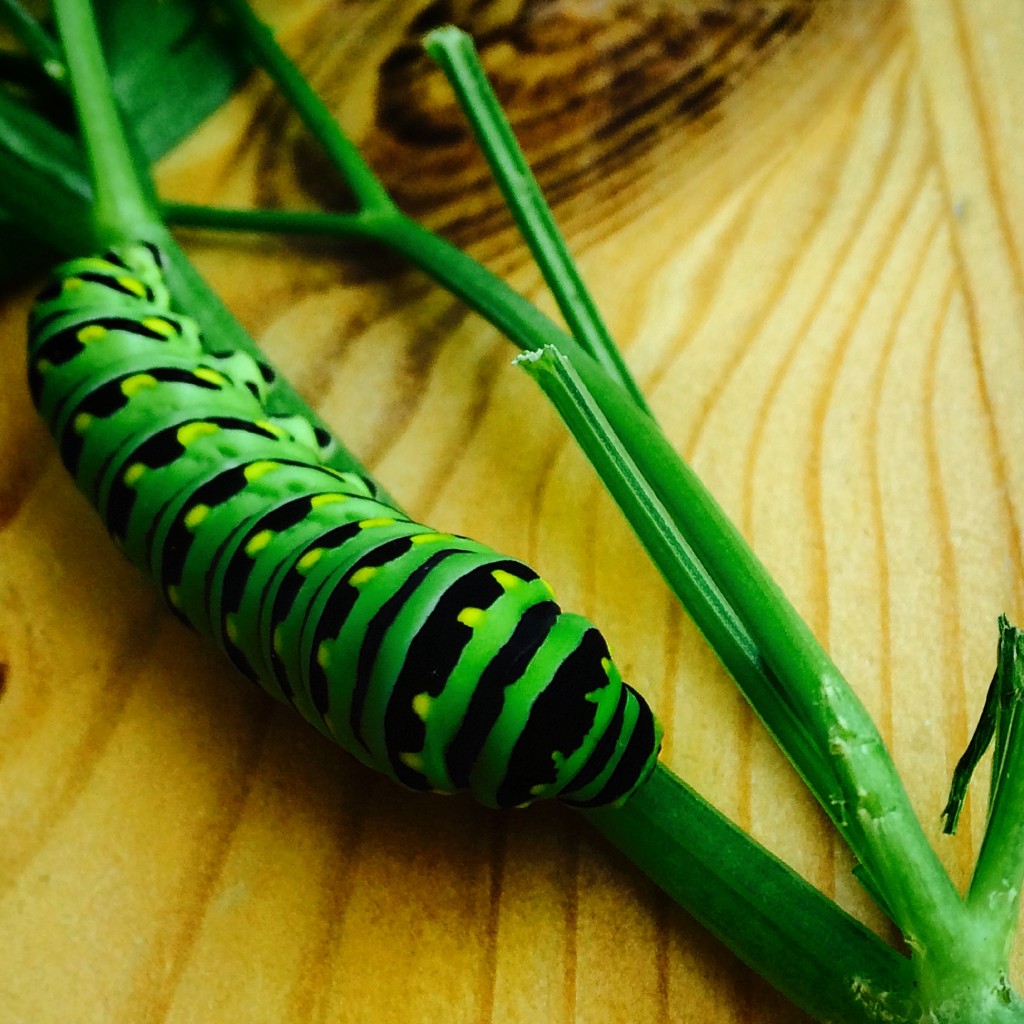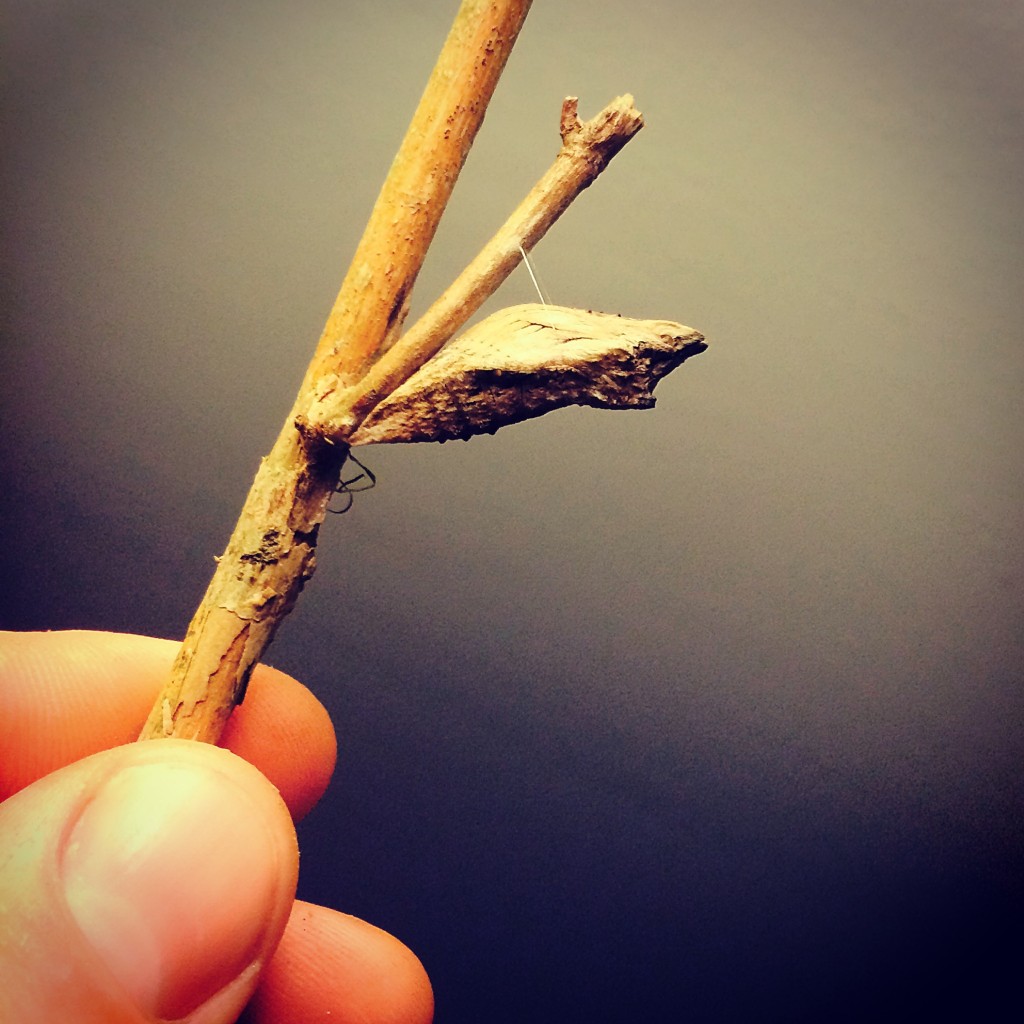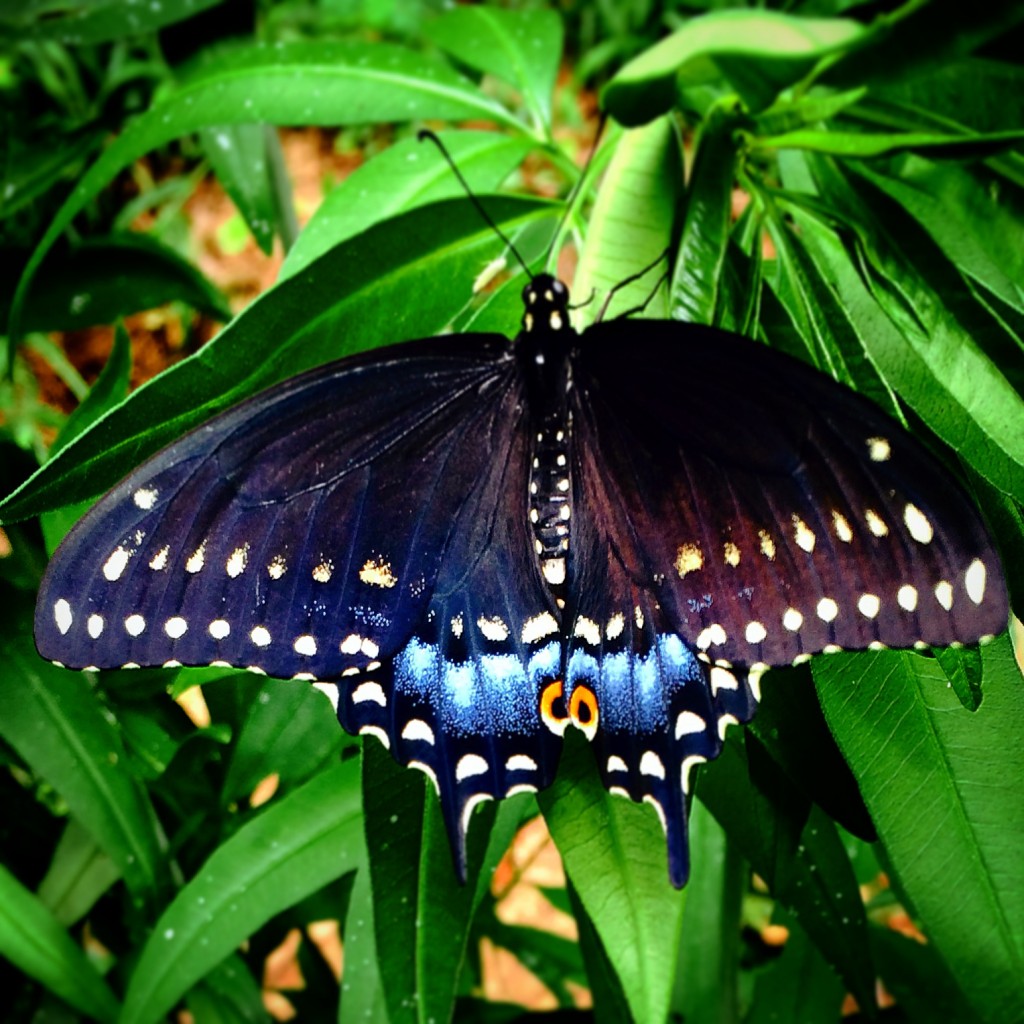Eastern Black Swallowtail Emergence at Hildacy
By Mike Coll, Preserve Manager
One of the things that I appreciate most about living on a preserve is getting to observe natural processes up close. I am constantly fascinated by the life stories of species that exist around us, which so often go unwitnessed. This year my wife noticed a Black Swallowtail (Papilo polyxenes) caterpillar feeding on the parsley in our garden. The larval stage of Eastern Black Swallowtails (like many insects) has very specific dietary requirements. These caterpillars will only feed on members of the carrot family, including Queen Anne’s lace (Daucus carota), dill, and parsley. As the caterpillars grow, they move through various stages, called instars. Each instar is different in appearance, and the caterpillars sheds their skin four times as they move into the next instar.
This individual is in it’s second or third instar.

Black Swallowtails complete multiple generations each year. Because it was early in the summer when we found this caterpillar, I knew that it would complete its life cycle this season and that the resulting butterfly would then lay more eggs and go through at least one more cycle before winter. The final generation of this species each summer remains in chrysalis throughout the winter (unlike Monarchs, which migrate) and emerges the following spring.
I placed the caterpillar in an insect container, supplied it with some dill and parsley clippings from the garden, and waited to see what would happen next.
This is a fully grown Black Swallowtail caterpillar (4th instar). At this point, I made sure that there were a few sticks in the enclosure so that it would have something to anchor its chrysalis to. I also continued to give it fresh parsley every few days because it obtains both food and water from vegetation.

Within a week, the fully grown caterpillar created a chrysalis on one of the branches. Swallowtail chrysalises always have that one little spider web-like string attaching it to the branch. Amazingly, in the case of individuals who overwinter in chrysalis, that tiny string remains intact throughout the many months and harsh weather between the fall and spring.
During their time in chrysalis, Swallowtails essentially digest themselves and the fat stores that they have built up during the larva stage and reconstitute the elements into a new form.

Just a few weeks later, the chrysalis split open and this butterfly emerged. It has been shown that certain memories created during the larval stage are carried over into the butterfly stage in some species. So, at least in some ways the consciousness that was the caterpillar continues to exist when it becomes a butterfly.
While its obvious that a butterfly’s consciousness is far different from ours, I couldn’t help but wonder what possible view of the world this butterfly could have after inhabiting such a completely different form just a few weeks earlier. When the above picture was taken it seemed like she had not yet realized that flight was now possible.

After a few minutes, the newly emerged butterfly took off and landed on a native perennial a short distance away. This butterfly can be identified as a Black Swallowtail by the two rows of yellow dots along the wings (as opposed to a dark-morph female Tiger Swallowtail, which only has one row). It is a female because male Black Swallowtails have much larger yellow dots in a similar pattern.

In its adult form, the Black Swallowtail butterfly will feed on the nectar of a variety of flowers and hopefully mate and lay more eggs on one of the carrot-plants that can support the next generation of caterpillars.
One recommendation I have for anyone who finds a caterpillar and would like to watch its metamorphosis is to make sure that you have adequately identified and researched the species that you find. Because each species has very particular requirements for its survival, failing to provide the correct vegetation or habitat will not yield good results. There are plenty of resources online that can help with identification of caterpillars and butterflies. Lately, I have found this site to be good source of info. Despite being from northern Virginia, most of the species are the ones I see here in eastern Pennsylvania.
